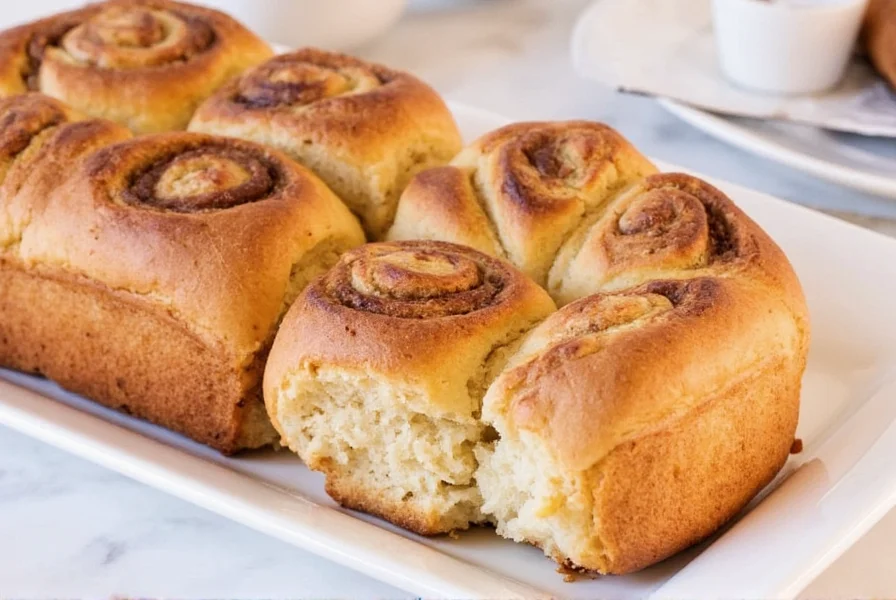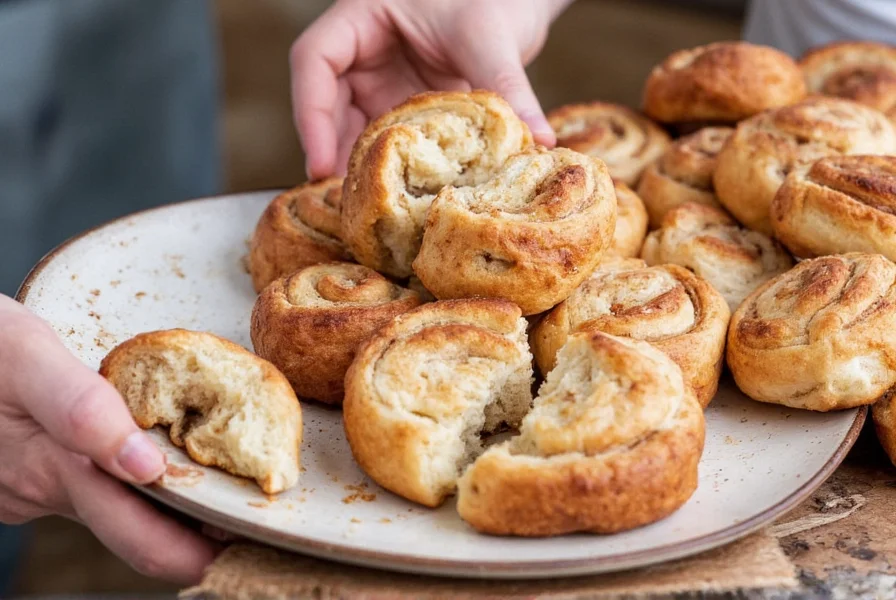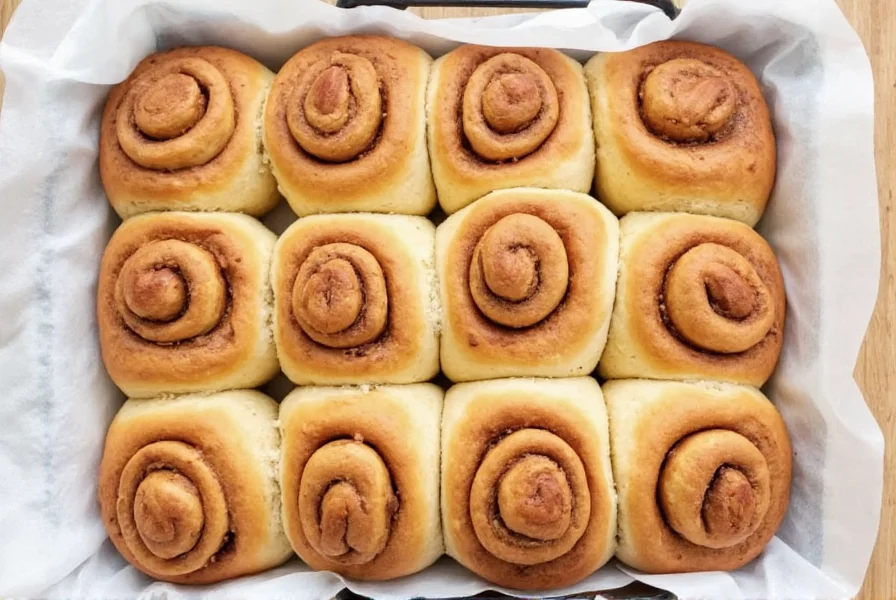For health-conscious food lovers seeking to enjoy indulgent flavors without compromising nutritional goals, protein cinnamon rolls have become a popular solution. These modified pastries maintain the beloved swirl of cinnamon and sweet icing while transforming the nutritional profile to align with active lifestyles. Unlike conventional cinnamon rolls that can contain 30-50 grams of sugar and minimal protein, the protein-enhanced version delivers balanced macronutrients that satisfy cravings while supporting fitness objectives.
The Nutritional Advantage of Protein Cinnamon Rolls
Traditional cinnamon rolls typically contain minimal protein (around 3-5 grams per serving) with high amounts of refined carbohydrates and sugars. Protein cinnamon rolls flip this ratio, offering 15-25 grams of protein while significantly reducing sugar content. This macronutrient shift provides several benefits:
- Sustained energy release - The higher protein and fiber content slows digestion, preventing blood sugar spikes
- Muscle recovery support - Post-workout nutrition that satisfies sweet cravings while delivering repair nutrients
- Increased satiety - Keeps you feeling full longer compared to traditional pastries
- Nutrient density - Often incorporates whole food ingredients with vitamins and minerals
| Nutritional Component | Traditional Cinnamon Roll | Protein Cinnamon Roll |
|---|---|---|
| Calories | 300-400 | 250-350 |
| Protein | 3-5g | 15-25g |
| Total Sugar | 25-40g | 5-15g |
| Dietary Fiber | 1-2g | 4-8g |
Essential Ingredients for Perfect Protein Cinnamon Rolls
Creating bakery-quality protein cinnamon rolls at home requires understanding how alternative ingredients behave differently than traditional baking components. The key is selecting the right protein powder and complementary ingredients that maintain moisture and texture.
Protein Powder Selection
Not all protein powders work equally well in baking. For optimal results in high protein cinnamon roll recipe applications:
- Whey protein isolate - Best for texture and minimal aftertaste (ideal for healthy cinnamon rolls with protein)
- Casein protein - Creates a softer texture but may require additional liquid
- Plant-based blends - Look for rice/pea protein combinations for better binding (essential for vegan protein cinnamon rolls)
- Avoid single-source plant proteins like soy or hemp which can create dense, dry results
Flour Alternatives
Traditional all-purpose flour doesn't pair well with protein powder. Successful gluten free protein cinnamon rolls typically use:
- Almond flour (provides moisture and richness)
- Cashew flour (milder flavor than almond)
- Oat fiber (adds structure without strong flavor)
- Psyllium husk (critical for binding in gluten-free versions)

Step-by-Step Homemade Protein Cinnamon Rolls Recipe
This tested recipe produces soft, bakery-style homemade protein cinnamon rolls with 20g protein per serving. The secret lies in the hydration balance and proper mixing technique.
Dough Ingredients
- 1 scoop (30g) unflavored whey protein isolate
- ½ cup almond flour
- ¼ cup oat fiber
- 1 tsp psyllium husk powder
- 2 tbsp melted coconut oil
- 2 large eggs (or flax eggs for vegan)
- 3-4 tbsp unsweetened almond milk
- 1 tsp apple cider vinegar
- ½ tsp baking powder
Filling Ingredients
- 2 tbsp coconut sugar or monk fruit sweetener
- 1½ tsp cinnamon
- 1 tbsp melted coconut oil or butter
Icing Ingredients
- 2 scoops vanilla protein powder
- 2-3 tbsp unsweetened almond milk
- ½ tsp vanilla extract
- Optional: 1-2 drops liquid stevia
Preparation Method
- Mix dry ingredients: Whisk protein powder, almond flour, oat fiber, psyllium husk, and baking powder
- Combine wet ingredients: Beat eggs, coconut oil, apple cider vinegar, and 3 tbsp almond milk until smooth
- Form dough: Gradually incorporate wet into dry ingredients. Add additional milk only if needed to form a soft dough (should not be sticky)
- Rest dough: Cover and refrigerate for 15 minutes to allow psyllium to hydrate
- Roll out: Between parchment paper, roll dough into 10x12 inch rectangle (¼ inch thick)
- Add filling: Brush with coconut oil, then sprinkle cinnamon-sugar mixture evenly
- Roll tightly: Starting from long edge, roll into log and pinch seam
- Cut: Slice into 8 equal pieces using dental floss for clean cuts
- Bake: Place in greased pan and bake at 350°F for 18-22 minutes until golden
- Prepare icing: Whisk icing ingredients to desired consistency and drizzle over cooled rolls
Avoiding Common Protein Cinnamon Roll Mistakes
Many first-time bakers encounter issues with protein powder cinnamon rolls. Understanding these pitfalls ensures success:
- Overmixing the dough: Protein dough becomes tough when overworked. Mix just until combined.
- Incorrect hydration: Protein powder absorbs more liquid. Adjust milk quantity based on dough texture, not strictly by measurement.
- Using flavored protein powder: Vanilla or chocolate powders can overpower cinnamon flavor. Unflavored works best for protein cinnamon roll nutrition facts control.
- Baking at wrong temperature: Too high causes exterior to burn before interior cooks. 350°F is optimal.
- Cutting with knife: Use dental floss for clean slices without squishing the rolls.

Variations for Different Dietary Needs
The versatility of low sugar protein cinnamon rolls makes them adaptable to various dietary requirements:
Gluten-Free Adaptation
For those seeking gluten free protein cinnamon rolls, ensure all ingredients are certified gluten-free. The base recipe already uses almond flour and oat fiber, but verify your protein powder is gluten-free certified as some may contain traces.
Vegan Version
To create vegan protein cinnamon rolls:
- Replace eggs with 2 flax eggs (2 tbsp ground flaxseed + 5 tbsp water)
- Use plant-based protein powder (pea/rice blend)
- Substitute coconut oil for butter in filling
- Use almond or oat milk throughout
Keto-Friendly Option
For lower-carb versions:
- Replace coconut sugar with 1-2 tbsp erythritol
- Increase almond flour ratio while reducing oat fiber
- Use unflavored protein powder without added carbs
- Top with sugar-free icing made from powdered erythritol and protein powder
Storage and Reheating Recommendations
Proper storage maintains the texture of your protein cinnamon roll recipe creations:
- Room temperature: Store in airtight container for up to 2 days (best texture)
- Refrigeration: Keeps for 5-7 days but may become denser
- Freezing: Wrap individual rolls in plastic wrap then place in freezer bag for up to 3 months
For optimal reheating:
- Microwave: 15-20 seconds from refrigerator, 30-40 seconds from frozen (place damp paper towel over top)
- Oven: 300°F for 8-10 minutes (best method for restoring soft texture)
- Air fryer: 300°F for 3-4 minutes (creates slightly crisp exterior)
Frequently Asked Questions
Can I use any protein powder for making protein cinnamon rolls?
Not all protein powders work equally well. Whey protein isolate generally produces the best texture with minimal aftertaste. Avoid single-source plant proteins like soy or hemp which can create dense results. For vegan options, use a rice/pea protein blend. Flavored protein powders can overpower the cinnamon flavor, so unflavored is recommended for most best protein for baking cinnamon rolls applications.
Why do my protein cinnamon rolls turn out dry?
Dryness typically results from incorrect hydration balance. Protein powder absorbs more liquid than regular flour. Ensure you're using enough liquid ingredients (eggs, milk) and don't overmix the dough. Adding 1-2 tbsp additional almond milk if the dough seems too dry before rolling can prevent this issue. The dough should be soft but not sticky - similar to traditional pastry dough texture.
How can I increase the protein content without affecting texture?
To boost protein without compromising texture, add egg whites (¼ cup = 7g protein) or incorporate collagen peptides, which don't affect flavor or texture. You can also increase protein powder by 5-10g while simultaneously adding 1-2 tbsp additional liquid. For protein cinnamon roll nutrition facts optimization, consider adding Greek yogurt to the wet ingredients for additional protein and moisture.
Can I make protein cinnamon rolls without protein powder?
While technically possible using high-protein flours like chickpea or lentil flour, the results won't match true protein cinnamon rolls. These alternatives create strong flavors and dense textures that most find unappealing. For authentic healthy cinnamon rolls with protein, protein powder remains the most effective ingredient for achieving both high protein content and desirable texture.
How do protein cinnamon rolls affect blood sugar compared to traditional versions?
Protein cinnamon rolls typically have 60-75% less sugar and higher fiber content than traditional versions, resulting in a significantly lower glycemic impact. The combination of protein, healthy fats, and fiber slows carbohydrate absorption, preventing blood sugar spikes. This makes them a more suitable option for those monitoring protein cinnamon roll nutrition facts for diabetes management or stable energy levels.











 浙公网安备
33010002000092号
浙公网安备
33010002000092号 浙B2-20120091-4
浙B2-20120091-4